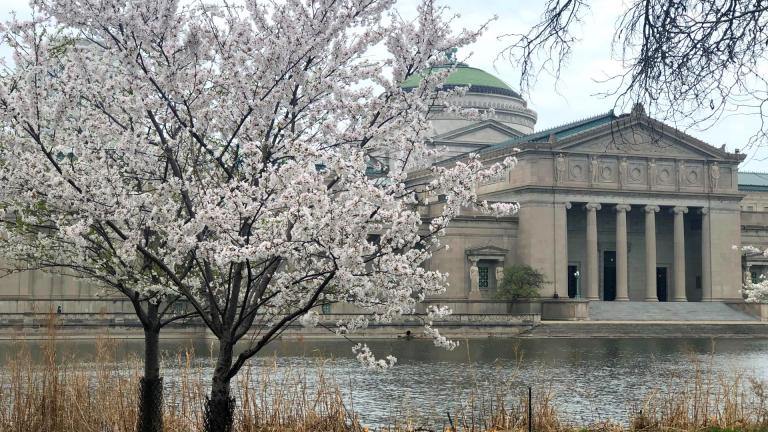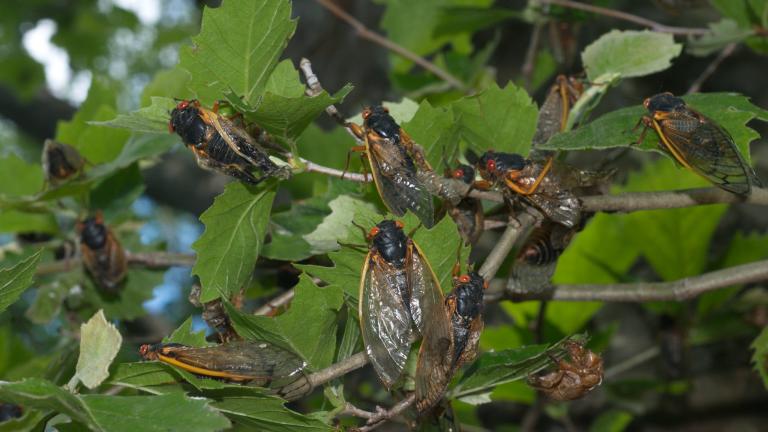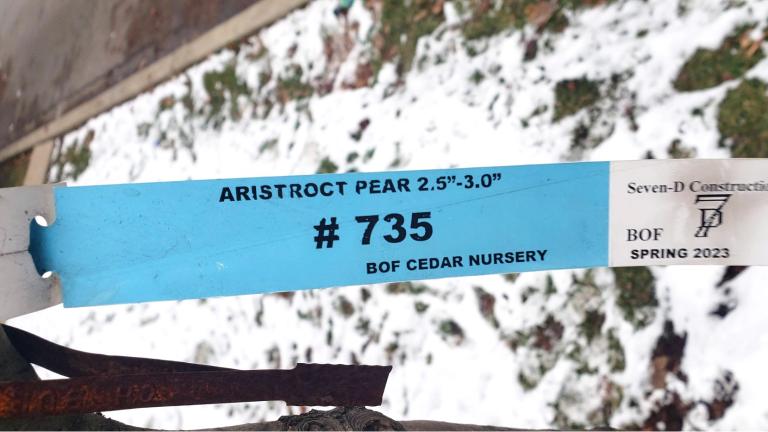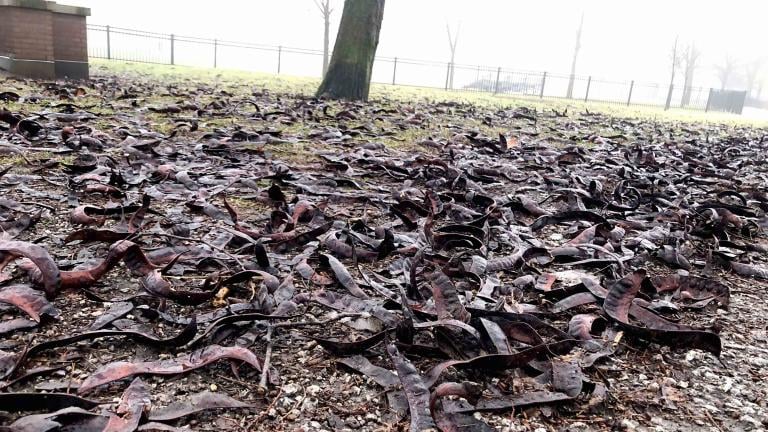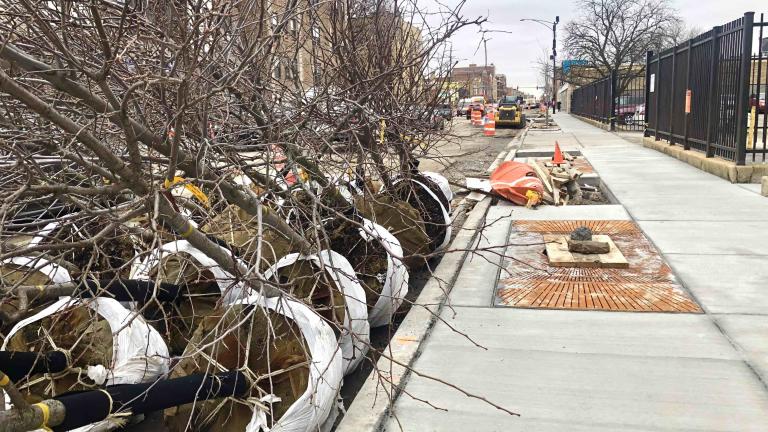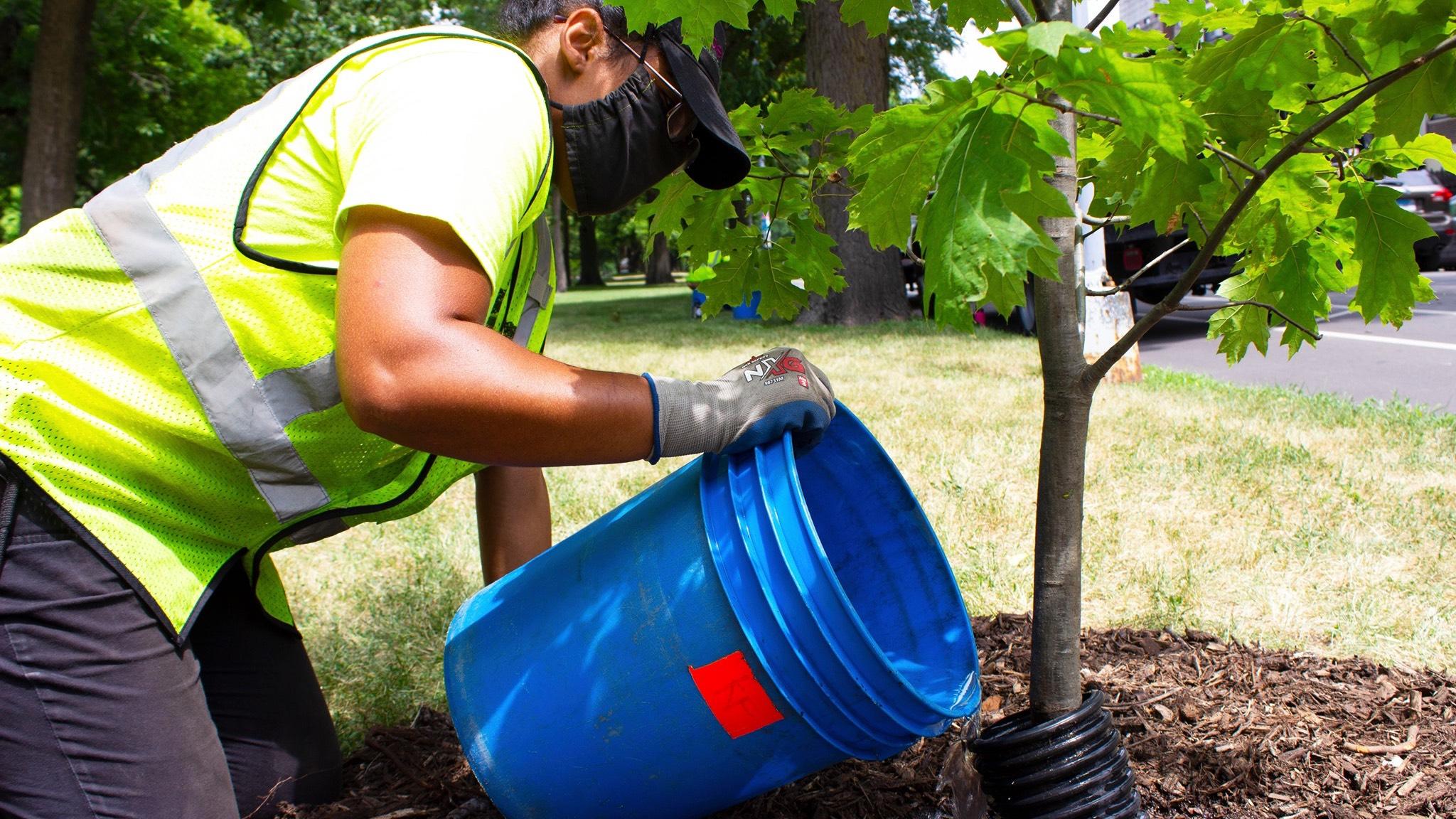 Chicago has room for 900,000 more trees in under-resourced areas alone. (Facebook / Openlands)
Chicago has room for 900,000 more trees in under-resourced areas alone. (Facebook / Openlands)
In what supporters are calling a big win for Chicago’s trees, the City Council unanimously approved an ordinance last week to create an Urban Forestry Advisory Board. The board, which will report to the mayor, will bring together public and private partners with a shared mission of strategically caring for and enhancing the city’s urban canopy.
Pushing the legislation through the City Council has been a long, slow process, its backers said, but now the even more difficult work begins.
Ald. Scott Waguespack (32nd Ward), who was one of the lead sponsors of the ordinance, said the board’s first meeting could occur by summer’s end once all 13 members are in place. Examples set by similar forestry boards in cities such as San Diego can help guide the initial setup process, he said.
There will certainly be no shortage of potential agenda items, said arborist Daniella Pereira, vice president of community conservation at Openlands and a strong proponent of the board’s establishment.
Among the top priorities, she said, is a need to tackle the disconnect between research that points to the need for increased tree cover in urban areas versus resistance from residents who blame trees for flooding their basements and don’t like dealing with the mess trees make.
Pereira said she wasn’t surprised such complaints were raised by various alderpeople, on behalf of their constituents, during committee hearings about the proposed forestry board. But what was refreshing, she said, was having city foresters on hand to dispel myths, including the most pervasive of them all: that tree roots bust sewer pipes. The foresters’ response — tree roots can indeed work their way into a pipe that’s already cracked, but they don’t cause the break itself, which is a symptom, rather, of aged infrastructure — is precisely the sort of truth-telling the forestry board is designed to provide, she said.
The persistence of misinformation, including among council members, is proof “we need to do a much better job around education and the benefits of trees,” said Pereira.
Lydia Scott, director of the Chicago Region Trees Initiative, concurred. (CRTI is a collaborative partnership of more than a dozen agencies and organizations; two of the forestry board members will be drawn from CRTI’s ranks.)
“We were doing a tree inventory in Pullman a year ago and there was a woman that stopped us and asked us what we were doing. And we said, ‘Well we’re doing a tree inventory.’ And she said, ‘Oh I hate trees. I absolutely hate trees,’” Scott recalled. “Then she started to explain to us, well the reason she hates trees is that she’s older, she doesn’t have the capacity to rake the leaves out of her yard, and things like that.”
Here’s an opportunity, Scott said, for the forestry board to conduct outreach, solicit concerns and feedback, and address issues people might have. In the case of the exchange that took place in Pullman, the CRTI team was able to inform the resident that leaves don’t need to be raked and can actually be left in place to provide nutrients to soil.
“The goal will not be to force trees down people’s throats. It will be to introduce them to the many benefits and opportunities that trees provide and why it’s important that they consider planting them,” said Scott. “And it’s lucky for us that trees do so many wonderful things they’re not a hard sell.”
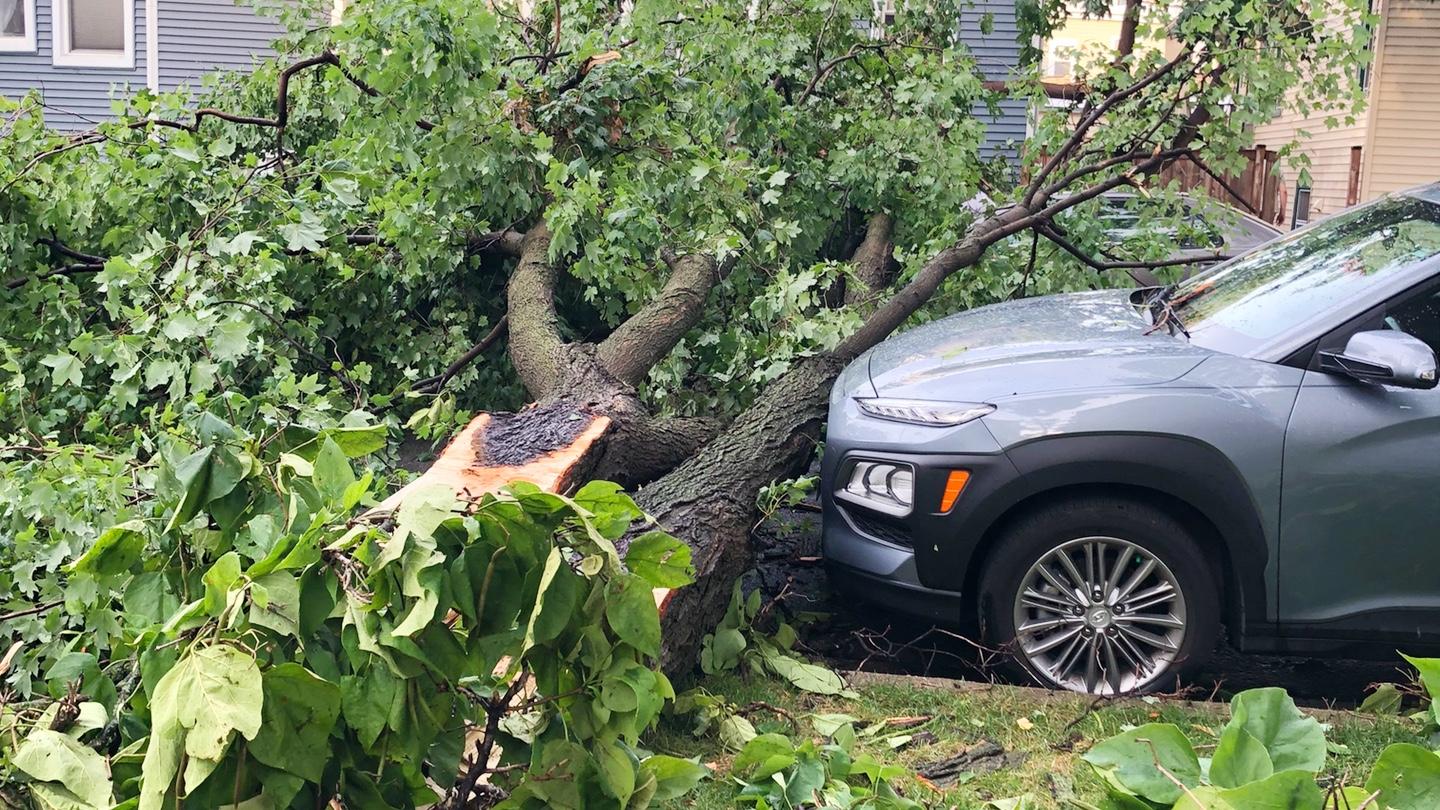 Storm damage, the Emerald Ash Borer and development have all contributed to the loss of tree canopy in Chicago. (Patty Wetli / WTTW News)
Storm damage, the Emerald Ash Borer and development have all contributed to the loss of tree canopy in Chicago. (Patty Wetli / WTTW News)
There is a growing sense of urgency among forestry experts when it comes to ensuring healthy, robust urban canopies.
Trees are considered critical when it comes to mitigating the effects of climate change: they store carbon, absorb pollutants and stormwater, provide shade and lower the temperatures created by heat islands. According to the conservation organization American Forests — founded in 1875 as the American Forestry Association — trees can reduce air temperatures by up to 7 degrees during the day and 22 degrees at night.
But the needle is moving in the wrong direction. In a recent study, American Forests found that in urban communities, one tree is lost for every two trees planted or naturally regenerated. Along with the challenges inherent in growing trees in urban areas, losses are attributed to natural disasters, pests, tree removal for development and improper planting practices. By 2060, the projected loss of tree canopy in urban areas across the U.S. is expected to reach 8.3%, according to the study.
Chicago exemplifies many of the study’s findings.
Since 2010, the city has removed a net average of 10,000 street trees every year, Pereira said. “If you could understand what 10,000 trees looks like, it would take down every tree from Western Avenue (at Howard) in Rogers Park straight down south for 20 miles to 95th (Street) in Beverly, and then coming back up Kedzie, 20 more miles. Forty miles of linear street trees coming out per year is what happens in Chicago,” she said.
A 2020 census of Chicago’s trees, led by the Morton Arboretum, found that the city’s canopy cover decreased from 19% in 2010 to 16% in 2020, largely due to the loss of millions of ash trees. Two species of maple dominate Chicago’s remaining leaf cover, leaving the city extremely vulnerable to another devastating pest.
There’s room for 900,000 trees in Chicago’s under-resourced neighborhoods alone, Scott said. “We have the mapping where we show where trees can go,” she said.
If the city could boost its canopy cover to 20% by the year 2050, “that would be huge,” said Scott. “For the last 20 years, the canopy’s been declining. If we can reverse that decline, that’s a win.”
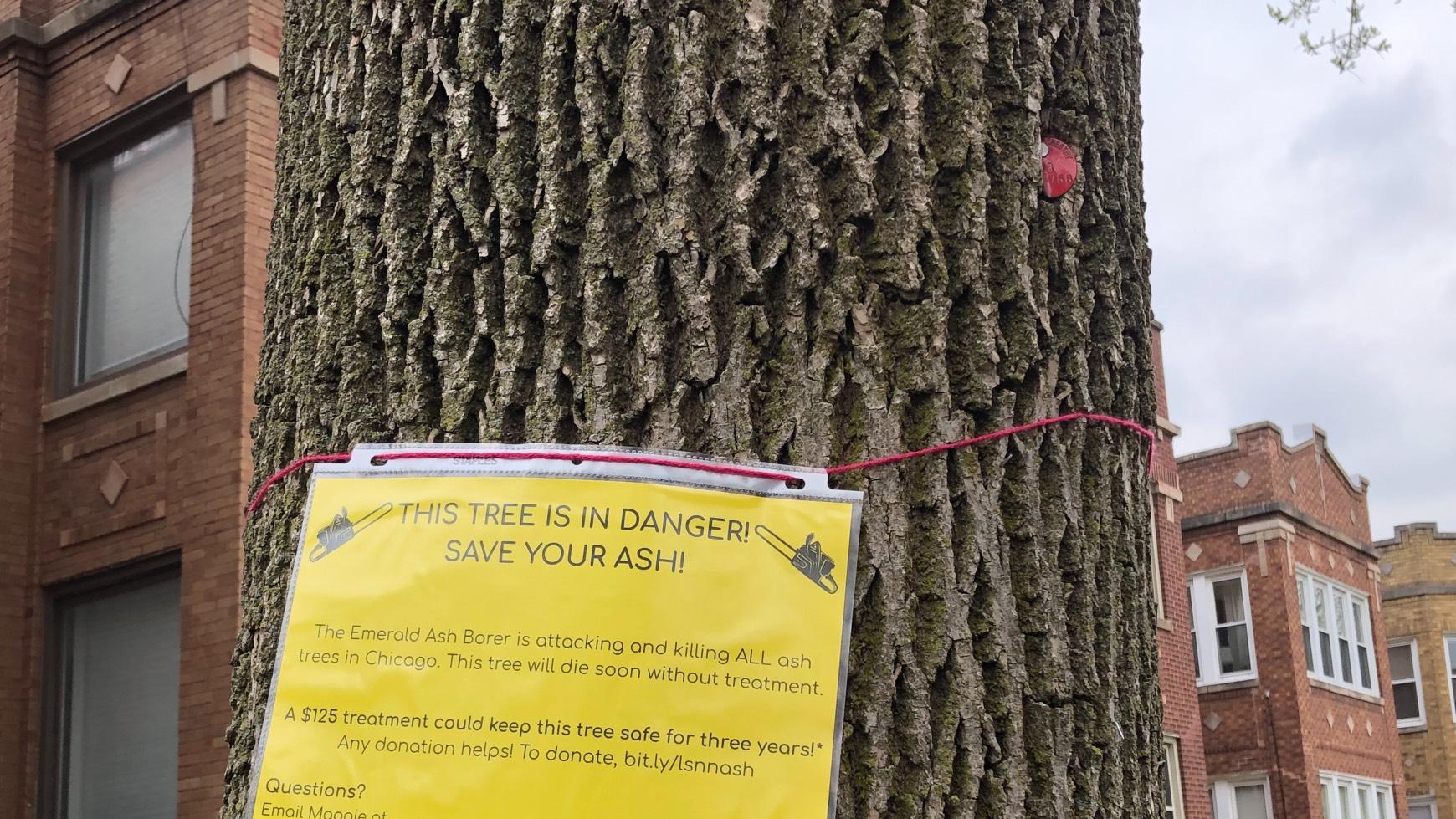 The forestry board can help build consensus for a unified approach to threats like the emerald ash borer. (Patty Wetli / WTTW News)
The forestry board can help build consensus for a unified approach to threats like the emerald ash borer. (Patty Wetli / WTTW News)
The board can help identify funding sources for trees — not just the planting, but the maintenance — and organizations such as Openlands and the CRTI coalition can serve as trees’ biggest cheerleaders. But the board’s greatest potential lies in bringing together representatives from the various city agencies that touch on trees, from the Water Department to Forestry to the Department of Transportation to the Chicago Park District to Planning and Development.
“Forcing people to talk might be a good thing,” said Pereira.
She cited the city’s approach to dealing with the emerald ash borer as something the board could have spearheaded, by making recommendations and building consensus. Instead, the Park District opted not to treat its ash trees, and Forestry initially treated and then halted inoculations.
“Our goal is not to step in and beat the city up over what is or isn’t happening. But if we can provide some sort of avenue to get us all moving in the right direction, then it’s great,” said Scott.
Other topics worthy of debate, Pereira said, include revisiting why Chicagoans have to request a replacement tree when one is removed from the parkway, rather than have a new tree planted automatically. Or if trees are cut down for development, she asked, why doesn’t the developer have to pay into a compensation fund designated solely for tree replacement?
The board could face its toughest test right out of the gate, in the form of the looming need to replace hundreds of thousands of lead service pipes. Ripping up infrastructure almost always results in the loss of trees, and the scale of the lead pipe project is “frightening” to contemplate, Pereira said. “We’re not even having a conversation about this.”
With the creation of the board, there is now a forum for that discussion to take place. Though Pereira said she anticipates it will take awhile for the board’s influence to be felt, that it now exists is a hopeful sign.
And the timing couldn’t be more fortuitous, Scott said, as the coronavirus pandemic sparking a renewed appreciation for all things nature.
“I think as we continue to live in these urban environments and experience climate change, our trees and our green spaces are going to become increasingly more important,” Scott said. “Obviously, we may not be able to convince everybody, and that’s OK, but the goal is to get out there and try to get people on board.”

